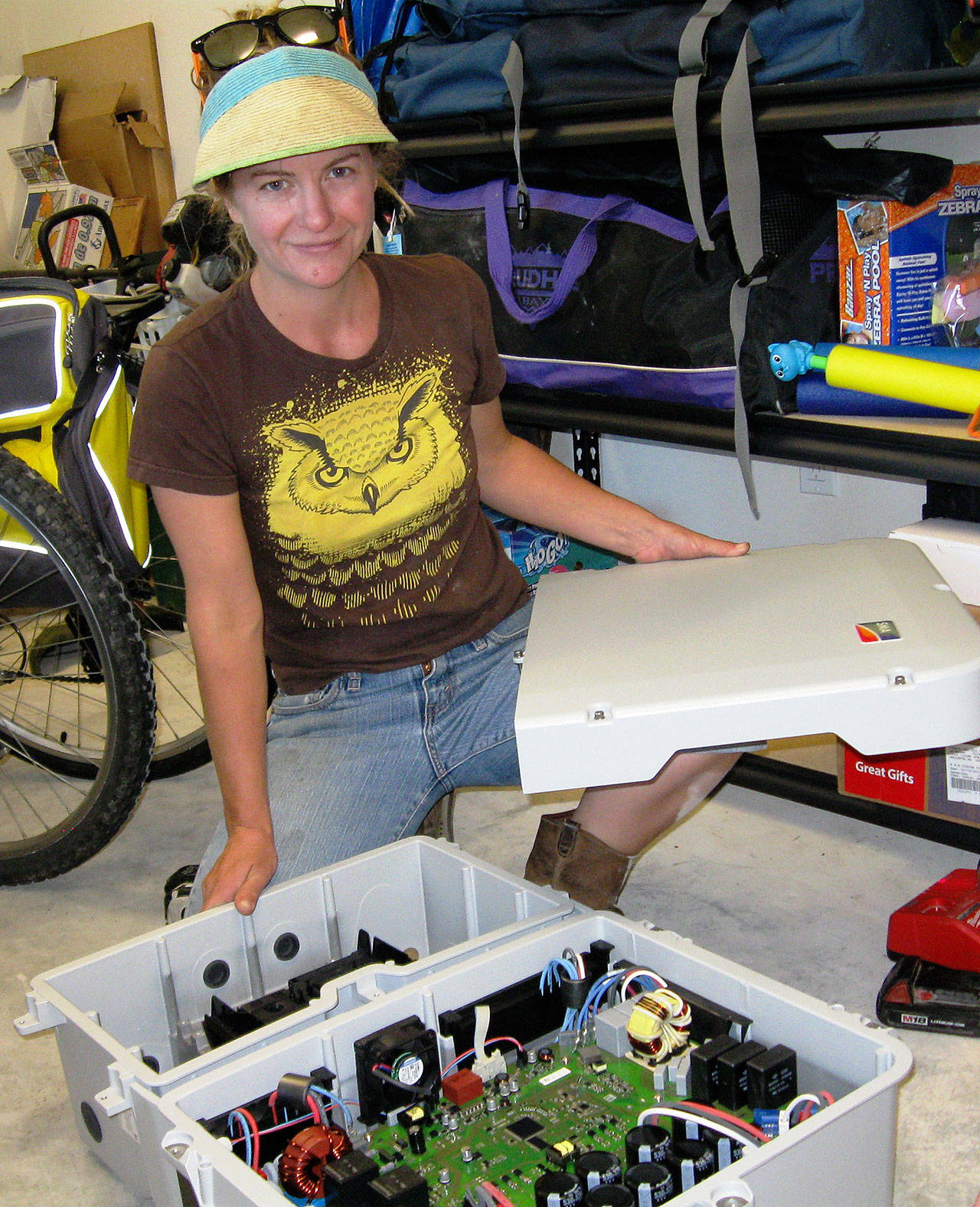Whidbey Islanders like to go green. Whidbey has more solar energy installations per capita than the rest of Washington, says the head of the island’s only solar installation company.
“The solar industry is thriving and we’re busier than ever now,” says Kelly Keilwitz, founder of Whidbey Sun and Wind in Coupeville.
“We’ve purchased a third truck and we’re increasing crews.
“But the solar energy principle called net metering is in jeopardy, and the issue is likely to come before the legislature again in the next session.”
Under Washington law, net metering enables commercial and residential solar users to get retail credit for excess production sent back to a power company.
Users can redeem the credit when they are not producing solar energy, such as during the rainy winter season.
Complex calculations determine the rate of net metering compensation, and power companies can quit paying once they reach a specified payment quota.
Most recently, public utilities districts, or PUD, in Clallam, Klickitat, and Kittitas counties, and member cooperative Inland Power and Light in the Spokane area, stopped net metering credit, says Allison Arnold of the state’s solar trade association.
Arnold explains that Washington has one of the lowest net metering structures in the country. Twelve of the 60 utility companies in Washington have reached their legal payment obligations.
In Klickitat County, she notes, commissioners voted against strong public support for the credit, even though net metering payments amounted to a small fraction of the utility’s costs.
Originally, the law was intended to encourage private investment in renewable energy, stimulate economic growth and enhance diversification of energy resources.
“Fair net metering has many social benefits that are not calculated in the total revenue impact,” says Arnold, the Executive Director of Solar Installers of Washington. “Abandonment of net metering has a chilling effect and undermines the intent of the law.”
Keilwitz says that Washington solar customers also get a production credit for the amount of energy they generate, and a bonus for using equipment made in Washington.
One of Whidbey’s best known solar installations is at historic Greenbank Farm. With help from a Seattle-based nonprofit organization, three dozen investors formed Island Community Solar in 2010 to manage the project.
The Greenbank installation is intended as an educational demonstration, using some power for the farm and sending some back to Puget Sound Energy.
The nonprofit became Spark Northwest, and Linda Irvine of Langley became program director of the organization supporting community solar in Washington and Oregon.
“We see solar as part of an economy where our energy is locally-controlled, affordable, and clean,” says Irvine, an original Island Community Solar partner.
“We no longer have to promote the environmental benefits of solar,” say Keilwitz.
“It’s a proven product and the cost of most installations is less than the price of a new car before credits and incentives. The return on investment is better than the average loan rate.”
Keilwitz is a geological and civil engineer by training. When he started the company in 2000, most of the business was solar water heaters before it was legal to connect to the power grid.
“I wanted to put my efforts toward doing something that makes a difference for the planet,” he says. “My original business plan wasn’t great, but the business is healthy. My goal is to have a sustainable business and support employees. There’s growth as well as uncertainty. I’m cautious about growing at any cost.”
According to Keilwitz, about 40 percent of his business now is installing solar on existing business and residential buildings. “The incentives are good, costs are low, new building creates demand. There’s never been a better time to go solar.”
Keilwitz explains there are three types of solar installations using photovoltaic cells usually mounted on a roof.
The first is a stand-alone system, with or without storage batteries. “It can be difficult to rely completely on solar with this system,” he says.
The second, and most common type involves connecting the solar system to the main power grid.
The third and most sophisticated method is a grid-connected system with storage batteries. With storage, the system owner can send more power back to the utility company and does not have to rely on the main power grid all the time, for example, when the power goes out.
Keilwitz says some newer photocells are more attractive and reduce what some consider the harsh visual impact of a solar installation. There were complaints about the appearance of solar panels when they were installed at Greenbank Farm.
He says the concept of solar shingles, such as those promised by the Tesla company, really isn’t new. There are questions about mixing a product intended to seal a roof with something that produces electricity. For example, problems could be more complicated if anything goes wrong with the roof.
He also observes that most electric vehicles would require more solar power than could be produced by panels on the top.
Despite technological improvements, lower costs, and increasing demand, both Keilwitz and Arnold emphasize that adjusting the net metering provision is essential to continued growth in solar energy.
A bill with bipartisan support passed the Senate last year, but didn’t get to debate in the House.
“Customers who generate power should be able to realize full value of their investment,” said Arnold.
“It would be in the best interest of the power companies to maintain good relations with solar producers, especially since utilities that invest in their own solar generation have to pay full cost of infrastucture,” he said.


